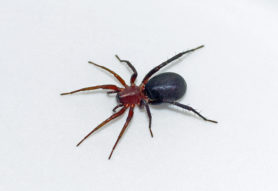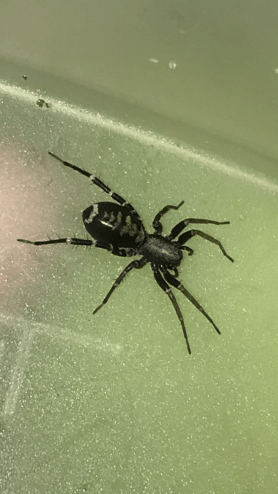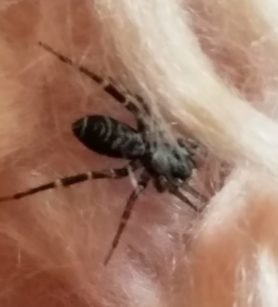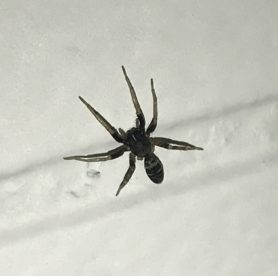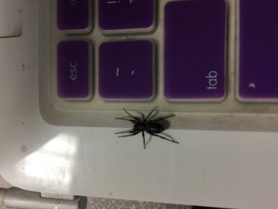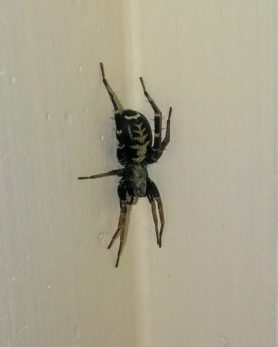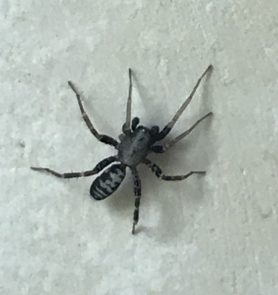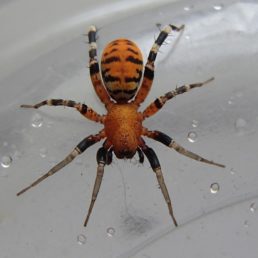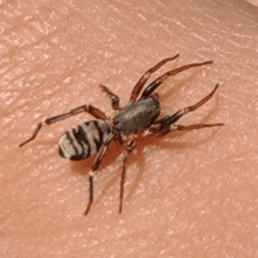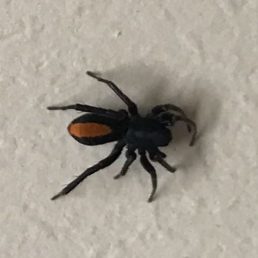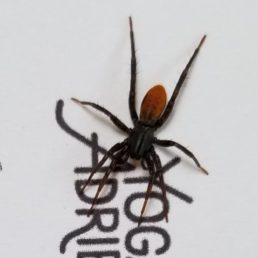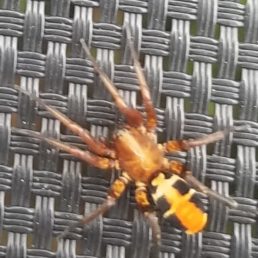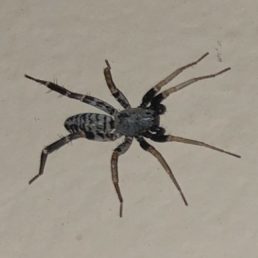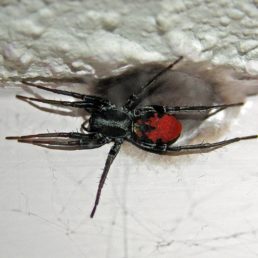Taxonomic Hierarchy
- Kingdom: Animalia
- Phylum: Arthropoda
- Class: Arachnida
- Order: Araneae
- Suborder: Araneomorphae
- Family: Corinnidae
- Genus: Castianeira
- Species: Castianeira longipalpa
Author
Nicholas Marcellus Hentz, 1847
Primary Colors
Sightings Overview
There have been 11 confirmed sightings of Castianeira longipalpa, with the most recent sighting submitted on August 26, 2019 by Spider ID member rickcwest. The detailed statistics below may not utilize the complete dataset of 11 sightings because of certain Castianeira longipalpa sightings reporting incomplete data.
- Web: 9% of the time, Castianeira longipalpa spiders are sighted in a spider web (Sample size: 11)
- Sex: 1 female and 2 male.
- Environment: Castianeira longipalpa has been sighted 7 times outdoors, and 7 times indoors.
- Outdoors: Man-made structure (1). Low foliage (1). High foliage (1). Ground layer (2). Open field, pasture, grassland (1). Desert area (1).
Location and Range
Castianeira longipalpa has been sighted in the following countries: Canada, United States.
Castianeira longipalpa has also been sighted in the following states: Georgia, Kentucky, Massachusetts, North Carolina, Ohio, Oregon, Pennsylvania, Virginia.
Seasonality
Castianeira longipalpa has been primarily sighted during the month of June.
- January:
- February:
- March:
- April:
- May: 4
- June: 4
- July:
- August: 3
- September:
- October:
- November:
- December:
Additional Remarks
- Outward appearance closely resembles Castianeira variata; the two can be separated with a microscope exam of the reproductive organs (there are slight differences in pattern and coloration too, but typically only experienced arachnologists can tell the difference). The range of the two species overlaps in some places, but Castianeira longipalpa is more common and widespread.
- Spider often mimics carpenter ants by slowly waving or “stroking” its front pair of legs in the air as if they were antennae. It will also slowly “nod” its abdomen up and down.
- Egg sacs look like white, flattened discs that are attached to surfaces, and they don’t typically contain very many eggs (~10).
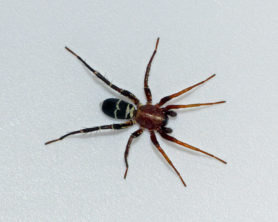 The spider species Castianeira longipalpa belongs to the genus Castianeira, in the family Corinnidae. Castianeira longipalpa spiders have been sighted
The spider species Castianeira longipalpa belongs to the genus Castianeira, in the family Corinnidae. Castianeira longipalpa spiders have been sighted 